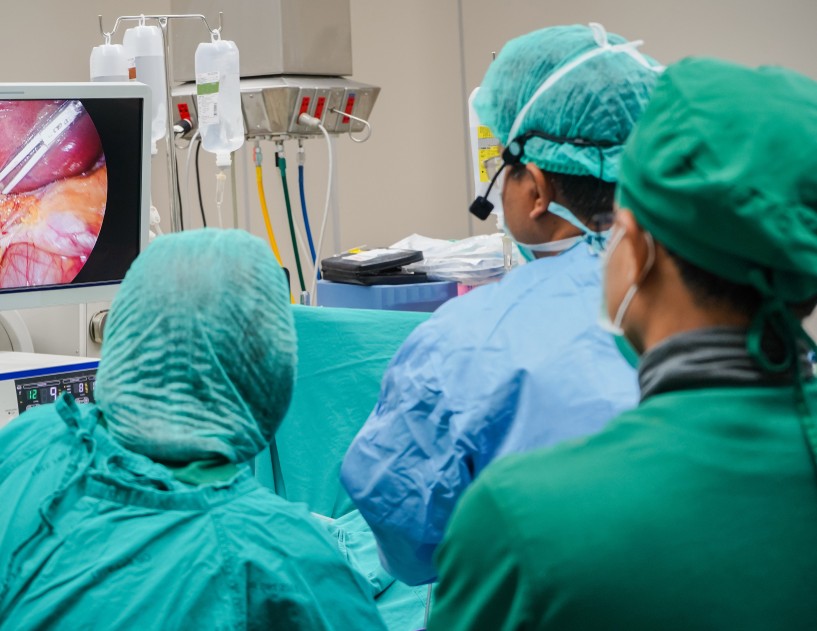Exploring OR nurse decision making
Editor's Note Perioperative nurses play an essential role in patient safety and surgical efficiency. But how exactly? Findings from a qualitative study published in the December issue of AORN Journal breaks down how perioperative nurses navigate decisions in high-pressure environments. This study involved semi-structured interviews with 11 perioperative nurses working…
Staffing Strategy: Grow Your Middle Management
Editor's Note Intentional work to grow leaders is an organizational strategy happening in hospitals across the country to target and prevent a higher level of leadership turnover, according to a November 5 news story in Becker’s Hospital Review. The article discussed how healthcare facilities are pursuing more internal development of…
Session: The importance of having a comprehensive plan to prevent workplace violence in ASCs

Editor's Note In this session, Beverly Kirchner, BSN, RN, CNOR(E), CASC, vice president of compliance at TriasMD and ambulatory surgery center (ASC) track leader for the OR Manager Conference, spoke on behalf of Parkland Health’s JD Boucher and Karen Garvey on how violence against healthcare workers is rising and requires…
Charlotte surgical institute launches as US hub for robotic, minimally invasive training

Editor's Note A new medical training institute in Charlotte, North Carolina, is positioning itself as a major national destination for robotic and minimally invasive surgery education, Axios Charlotte October 29 reports. The North American headquarters of IRCAD (Institut de Recherche contre les Cancers de l’Appareil Digestif, or Research Institute Against…
Session: Creating transparent paths to career growth to retain staff and boost morale

Editor's Note MD Anderson is hardwiring career mobility so staff can see, test, and pursue growth without leaving the division. According to this session’s panel—including Abigail Caudle, MD, MHCM, FACS, vice president of procedural and therapeutic medical operations; Robert Ghafar, MBA, RTT, vice president of procedural and therapeutic operations; and…
Streamlining surgical workflow with better team communication

Effective communication is the foundation of patient safety in the modern surgical environment. Most surgical procedures depend on seamless collaboration among surgeons, nurses, surgical technologists, and anesthesiologists, and when communication breaks down, patient risk rises sharply. In 2024, the American College of Surgeons reported standardized surgical handoffs improved adherence to…
Session: Helping leaders uphold accountability, cultivate a positive culture to boost nurse retention

Editor's Note Hold everyone to the same standard, model the behavior you expect, and build trust through transparency—that is how OR leaders retain nurses and improve performance, according to this session’s panel that included Taneka Curtis, MHA, BSN, RN, CNOR, nurse manager-cardiac, transplant and vascular service lines, Hospital of the…
Why volunteering matters: Growth for nurses and the profession

Volunteering is, at its core, about giving back. Yet many volunteer opportunities also create pathways to elevate one’s career and professional identity. At the American Board of Perianesthesia Nursing Certification, Inc (ABPANC), nurse volunteers grow both personally and professionally, gaining new knowledge, forming connections, and finding renewed purpose and emotional…
Session: Supporting a successful transition from clinician to leader

Editor’s Note New nurse leaders thrive when organizations invest in practical training and relationships, according to Aubrey Pepper, MSN, RN, DHA, CNOR, NE-BC, senior director of surgical services at St Jude Children's Research Hospital. In this session, Pepper said the most predictive skill for a smooth clinician-to-leader transition is “relationship…
Session: Overcoming imposter syndrome to master performance conversations

Editor's Note Even the most experienced nurses sometimes wonder, “Am I good enough?” That is how Laurie Burns MSN, RN, CNOR, RNFA, CIRT, clinical nurse educator, operating room; Aliaunda Macon, BSN, RN, staff nurse; and Simone Nicholson, DNP, MSN, RN, CNOR, nurse manager main operating room at Main Line Health…

 Free Daily News
Free Daily News